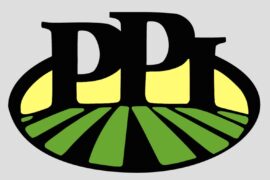Lamb Weston Holdings has announced sales of $824.6 million for the second quarter of fiscal year 2018, up 4.3% over the same period in 2017. Income, primarily generated by receipts from purchases of frozen french fries and other value-added potato products, increased 7% to $144 million. Earning per share amounted to $0.54, beating expectations by $0.01.
“Second quarter and first half results were solid,” said Tom Werner, president and chief executive officer of the Eagle, Idaho, USA-headquartered company. “Our commercial teams have worked through customer contract negotiations, and now that those discussions are largely behind us, we’re focused on our ongoing commitment to deliver industry-leading service, drive innovation and service limited time offerings with our customers. Our supply chain teams continued to focus on managing cost and capacity utilization, as well as successfully starting up our new 300-million-pound french fry production line in Richland, Washington.”
The CEO continued: “In addition, with this year’s potato crop fully harvested, we consider it to be consistent overall with historical averages, and that storability will also likely be consistent with planned expectations. With our solid first half performance and some key milestones now behind us, we have better clarity on how we see the rest of the year unfolding, and have raised our annual outlook for sales growth and EBITDA accordingly.”
Anticipating that growth in demand will continue beyond fiscal 2018, the company recently announced an additional 300-million-pound french fry production line expansion in Hermiston, Oregon, to be operational in the fourth quarter of fiscal 2019.
“This new capacity will support our customers’ growth in North America as well as Asia, where demand has been, and is projected to remain, strong,” said Werner. “In addition to funding this $250 million investment, we expect to generate sufficient earnings and cash flow to support the recent increase in our dividend, as well as provide flexibility to take advantage of future potential growth opportunities. By continuing to take a balanced, returns-driven approach when deploying capital, we remain confident in our ability to support our customers and create value for our shareholders over the long term.”
European Market
 Weighing in on business in Europe during an earnings call on January 4, Robert McNutt, senior vice president and chief financial officer, reported that the vast majority of the improvement in equity earnings was realized in the EU market.
Weighing in on business in Europe during an earnings call on January 4, Robert McNutt, senior vice president and chief financial officer, reported that the vast majority of the improvement in equity earnings was realized in the EU market.
“Last year we had relatively high potato prices in Europe, which impacted our cost structure,” he said. “Our team there was able to pass that through. As potato costs have come off this year, they’ve maintained pricing within Europe at those higher levels – so therefore expanded margins.”
He continued: “Where we’ve seen some pressure is in Middle Eastern export markets out of Europe, and that continues to be a bit of a dogfight. But within Europe, itself, prices continue to remain relatively stable. Having said that, looking forward, based on historical practice, we are expecting some price pressure in Europe during the back half of this year and into early next fiscal year.”





